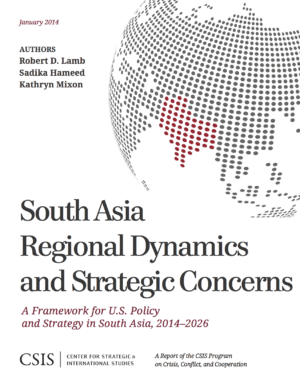■ Once the United States withdraws most or all of its forces from Afghanistan, what issues are likely to continue to be of concern to U.S. policymakers in South Asia? What regional dynamics are likely to affect their ability to achieve policy priorities there? While the United States and its coalition partners have focused primarily on Afghanistan and Pakistan over the past 12 years, the strategic dynamics most likely to be relevant over the next 12 years will probably be clustered around relationships linking Pakistan, India, and China. The authors of this report propose a framework for U.S. policy in South Asia centered around that cluster rather than the more common cluster of Afghanistan, Pakistan, and India. The report includes an analysis of U.S. policy priorities, contingencies, and regional dynamics in South Asia.
This report is accompanied by 10 background papers that informed the analysis:
- Afghanistan, by Sadika Hameed, Hannah Brown, and Elias Harpst
- Central Asia, by Jeffrey Mankoff
- China, by Andrew Small
- Europe, by Heather Conley
- Gulf States, by Sadika Hameed, Hannah Brown, and Elias Harpst
- India, by Donald Camp
- Iran, by Sadika Hameed and Julie Halterman
- Pakistan, by Sadika Hameed and Julie Halterman
- Russia, by Andrew C. Kuchins
- Turkey, by Craig Bonfield
>Read the full report here

